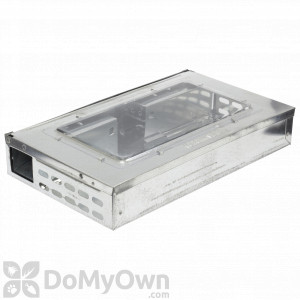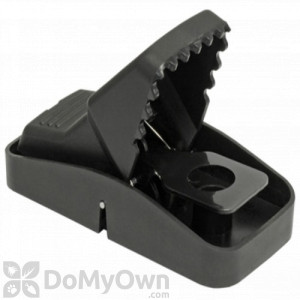Always Read the Label Before Trapping.
The following information is intended to improve the effectiveness of using snap traps for rodent control. It is not intended as a substitute for reading the product label. Before placing or setting any rodent trap, always read the product label thoroughly and carefully.
What is a Snap Trap?
A snap trap is a wooden, metal, or plastic trap with a powerful snap hinge intended to kill rodents instantly on contact. Snap traps are typically used with some form of bait to lure the rodent to the trap. A snap trap is different from a multiple-catch or live-catch trap. Snap traps require you to dispose of the dead rodent, whereas multiple-catch or live-catch traps allow humane capture and release of mice.
Recommended Snap Traps
- Victor Mouse Trap - Professional-Victor snap traps with a quickset and sensitivity setting to prevent the trap from snapping due to vibrations in the environment
- Victor Mouse Trap- Traditional Mouse Snap trap with the Metal Pedal.
- Trapper T-Rex Rat Trap- Trapper T-REX offers superior rat capture and may be used inside of a "bait box" to protect non-target animals and people from this strong snap trap .
- Victor Rat Trap- Sturdy, strong, and kill rats instantly.
- Victor Rat Trap - Professional-This enhanced rat snap trap has a larger bait pedal and a lever to set in environments with high vibrations.
Key Rule: Use Plenty of Traps
The key rule for using snap traps effectively is to use enough traps in the right locations so that the mice cannot be missed. For a light infestation of 1 to 2 mice in a residential kitchen, 6 traps is about right. This includes 2 behind the stove, 2 behind the refrigerator, and 2 behind the kitchen sink.
Place Traps in Areas of Highest Rodent Activity
Snap traps should be placed in areas of highest rodent activity. These areas can be determined by inspecting the premises for the highest concentration of rodent signs. Look for fecal pellets, tracks, runways, gnawing damage, grease marks, burrows, urine stains (made visible by a black or ultraviolet flashlight), rodent sounds, and live or dead rodents. High activity areas may include darkened corners, along walls, and behind appliances or other large objects.
Trap Spacing
- Since mice do not travel far, mouse traps should be spaced about every 10 feet.
- In severe mouse infestations, space traps closer together, about 6 feet apart.
- For rats, traps may be spaced 15 to 20 feet apart.
Trap Position
- To maximize the chances of rodents passing over traps during their travels, traps should extend from the wall at a right angle with the trigger end almost touching the wall.
- Another option would be to place a pair of traps parallel to the wall, with the triggers positioned to intercept rodents traveling from either direction.
- For Roof Rats: Set traps on tree limbs or other above ground places where roof rats have been sighted. Traps may also be fastened to overhead beams, pipes, and rafters with wire.
Baiting the Trap
- The right bait will lure rodents to the snap trap, especially when most other food sources have been eliminated through proper sanitation.
- Ideal baits for rodents are those that give off an aroma, such as bacon, hot dog pieces, nuts, or peanut butter.
- When using solid baits, tie the bait to the trigger. This will prevent rodents from being able to remove unsecured bait without setting off the trap.
- Where other food sources are abundant and cannot be eliminated, soft nesting material such as dental floss, cotton, or Styrofoam tied to the trigger may do the trick.
What To Do If A Rodent Is "Trap-Shy"
In some cases, you may run into a rodent that seems to avoid your traps at all costs, perhaps because of narrowly escaping death in a previous encounter. This will require more clever strategy. One method is to camouflage the trap by first burying an unset trap in grain, straw, or sawdust in a shallow pie pan. Baits should be placed in 3 to 4 small pieces on top of the pan with the trap hidden. Once the rodent accepts these baits safely for several nights, the trigger bait alone may be placed on top of the trigger with the trap set.
Rodent Trapping How-To Videos
View additional Mouse Control Products
View additional Rat Control Products





